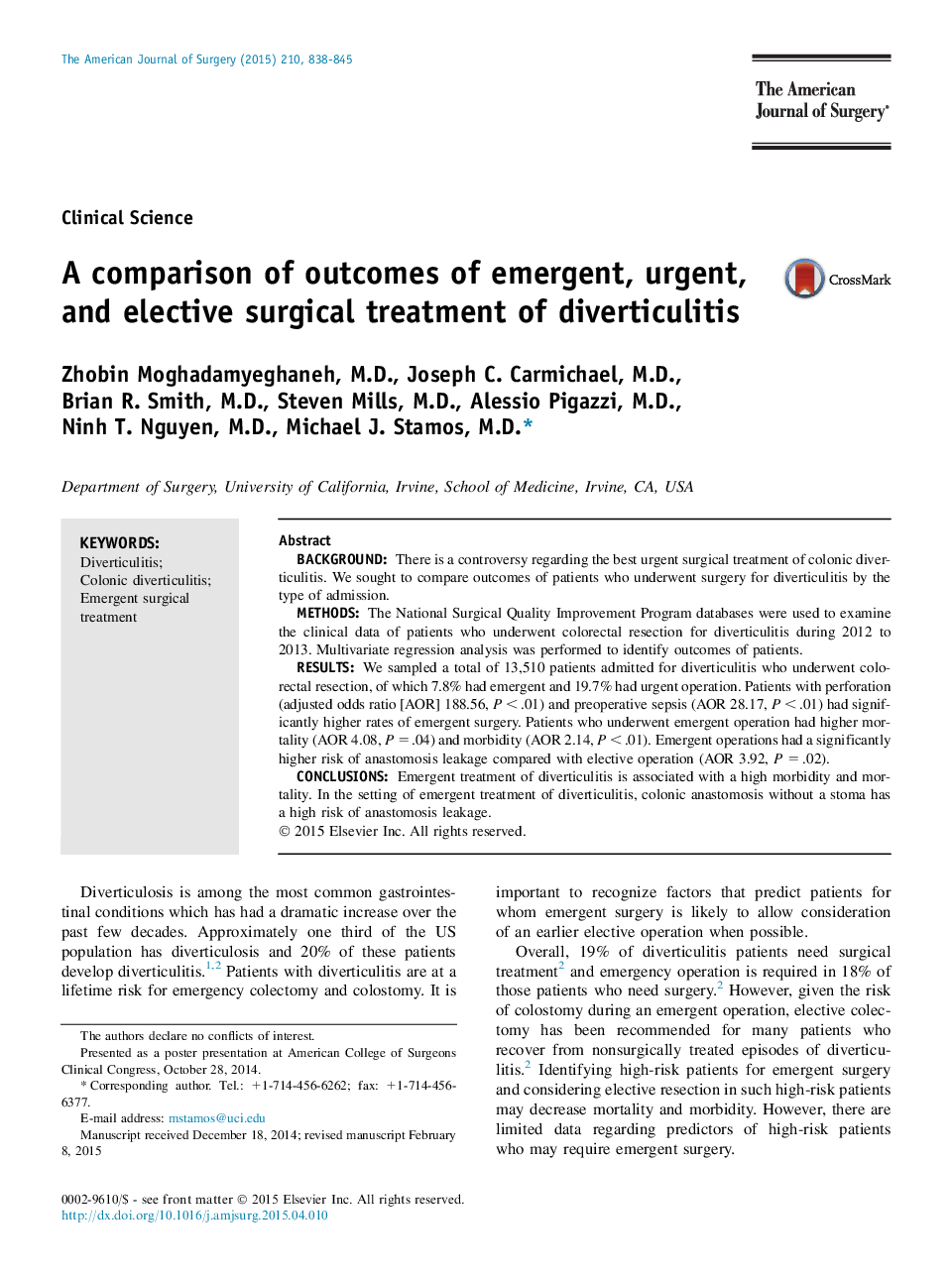| Article ID | Journal | Published Year | Pages | File Type |
|---|---|---|---|---|
| 4278252 | The American Journal of Surgery | 2015 | 8 Pages |
•Emergent treatment of diverticulitis is associated with high mortality rate.•Most of emergent diverticulitis patients undergo Hartmann’s procedure.•Outcome of patients operated on emergently/urgently is still suboptimal.•Patients with colonic perforation and preoperative sepsis have high risk to treat emergently.•Emergent treatment without a stoma has a high risk of anastomosis leakage.•Laparoscopic approach can decrease mortality and morbidity risks of emergent/urgent operations.
BackgroundThere is a controversy regarding the best urgent surgical treatment of colonic diverticulitis. We sought to compare outcomes of patients who underwent surgery for diverticulitis by the type of admission.MethodsThe National Surgical Quality Improvement Program databases were used to examine the clinical data of patients who underwent colorectal resection for diverticulitis during 2012 to 2013. Multivariate regression analysis was performed to identify outcomes of patients.ResultsWe sampled a total of 13,510 patients admitted for diverticulitis who underwent colorectal resection, of which 7.8% had emergent and 19.7% had urgent operation. Patients with perforation (adjusted odds ratio [AOR] 188.56, P < .01) and preoperative sepsis (AOR 28.17, P < .01) had significantly higher rates of emergent surgery. Patients who underwent emergent operation had higher mortality (AOR 4.08, P = .04) and morbidity (AOR 2.14, P < .01). Emergent operations had a significantly higher risk of anastomosis leakage compared with elective operation (AOR 3.92, P = .02).ConclusionsEmergent treatment of diverticulitis is associated with a high morbidity and mortality. In the setting of emergent treatment of diverticulitis, colonic anastomosis without a stoma has a high risk of anastomosis leakage.
